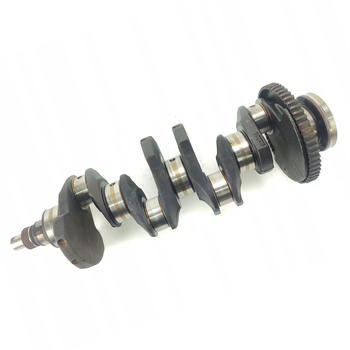The Unseen Hero: The Crankshaft
As it turns out, the humble crankshaft plays a crucial role in the smooth functioning of an engine. But, have you ever wondered what happens when it's subjected to immense stress and load? Let's dive into the world of crankshaft stress distribution and explore how engineers ensure its durability under heavy loads.
The Challenge: Stress Distribution and Durability
Engineers face a constant challenge: designing crankshafts that can handle increasingly higher loads while maintaining their structural integrity. The key lies in understanding and optimizing the stress distribution across the crankshaft.
The Art of Stress Distribution
Interestingly enough, the shape of a crankshaft significantly influences its stress distribution. Engineers use sophisticated simulations to analyze these forces and modify the design for optimal stress distribution. This process ensures that no single point on the crankshaft bears too much load, thereby enhancing its durability.
Fatigue Analysis: Predicting Failure
Now, here's something fascinating: engineers can predict potential failure points by conducting fatigue analysis. This method helps them understand how repeated loading cycles contribute to material degradation and ultimately lead to failure. By identifying these weak spots early in the design phase, engineers can make necessary modifications to improve the crankshaft's lifespan.
The Role of Material Selection
In my experience, selecting the right material is half the battle won. Materials with high strength-to-weight ratios, like forged steel or aluminum alloys, are often chosen for their ability to withstand high stress levels. Moreover, advancements in material science have led to the development of new composites that offer superior performance under extreme conditions.
Load Management: Working Smarter, Not Harder
Many experts agree that managing the load on a crankshaft is just as important as designing it to handle stress. Techniques such as counter-balancing, vibration isolation, and dynamic balancing help minimize load fluctuations and reduce overall stress on the crankshaft.
Tips for Effective Load Management
In Conclusion: Engineering for the Future
To be honest, engineering for crankshaft durability under load is an ongoing process that requires continuous innovation and refinement. As engine technologies evolve, so too must our approach to crankshaft design and load management. By staying informed about the latest advancements and best practices, engineers can continue to create reliable and efficient engines that stand the test of time.
Next Steps: Putting Theory into Practice
So, what's the next step for you? Whether you're an engineer looking to improve your designs or a curious enthusiast wanting to learn more, consider exploring resources on advanced crankshaft analysis techniques, material selection, and load management strategies. After all, knowledge is power – and in this case, it might just be the key to unlocking the full potential of your engine's crankshaft.




